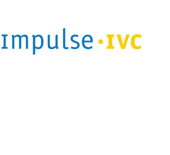The structure of the concept of creating an automated system proposed by IMPULSE-IVC consists of the following sections:
Definition of problems
Very often it is difficult for managers of organizations to determine correctly what the automated system (which is under development) will do, how much its development and operation will cost, how to evaluate the effectiveness of its work. Development and maintenance projects of the automated system can be prettyexpensive and it is not always clear whether it will be a positive effect for the organization, and if so, how it can be quantified.
The following issues are analyzed at the stage of determining the problem:
- Goals and objectives of the organization, criteria for assessing the effectiveness of its work. Goals and tasks of the automated system that it created should be directly related to goals and objectives of the organization.
- The state of information resources. The evaluation of the current level of information of the organization is conducted: the state of information systems, technical and software resources, qualifications of specialists, and also development opportunities are considered. While creating a new automated system we need to determine the list of resources that can be used.
- Potential users of the automated system, potential opponents. It is still important to identify at the initial stage what each of the user groups would like from the created automated system. It is advisable to immediately assess the main opponents of the created automated system and potential partners.
- Resources allocated for the development and operation of the automated system: financial, human resources, technical resources, etc., which are expected to be dedicated to the development and operation of the automated system. In this case, it is not necessary to estimate the real costs, but an exemplary estimate of how much resources are prepared to be allocated to the automated system by management.
Stages of concept development
- Defining goals. Based on the analysis of the organization's goals and objectives, existing information resources and plans for their development, groups of potential users, as well as resources available for the development and maintenance of the automated system. With this, it is possible to formulate the objectives of the project. It is advisable to take into account changes in goals, tasks and resources for several years to come.
- Defining the main tasks. For a particular automated system, it is advisable to specify (without detail) the concrete tasks that this system must solve in the next few years - what information to collect, in what form and how often to distribute.
- Determination of assumptions and risks. At this stage, it is desirable to count approximately the estimates used in the preliminary assessment of the project. As well as possible risks during the development and maintenance of the automated system. As a typical assumption, it is usually assumed that resources for the development and maintenance of the automated system will be allocated in a timely manner and in the required volume.
- Matching the results of the analysis. It is necessary to conduct first of all with groups of potential users. It is advisable to immediately propose several variants of the automated system, functions differing in the set and the costs of development and maintenance:
- A basic option;
- A cheaper alternative, with a smaller set of features variant;
- A more expensive variant, one with expanded capabilities.


